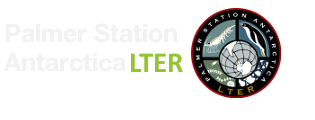
 This site was developed with the support of the National Science Foundation under Grant No. OPP-2224611 and OPP-2026045. Any opinions, findings, and conclusions or recommendations expressed in this material are those of the authors and do not necessarily reflect the views of the National Science Foundation.
This site was developed with the support of the National Science Foundation under Grant No. OPP-2224611 and OPP-2026045. Any opinions, findings, and conclusions or recommendations expressed in this material are those of the authors and do not necessarily reflect the views of the National Science Foundation.
Logistical support for this project in Antarctica was provided by the U.S. National Science Foundation through the U.S. Antarctic Program.
Rutgers University is an equal access/equal opportunity institution. Individuals with disabilities are encouraged to direct suggestions, comments, or complaints concerning any accessibility issues with Rutgers web sites to: accessibility@rutgers.edu or complete the Report Accessibility Barrier or Provide Feedback Form.

Benjamin Van Mooy named a 2024 MacArthur Fellow
New Species of Antarctic Dragonfish Discovered
Oscar Schofield named a Marine Technology Society Fellow
Former PAL Undergrad About to Launch into Space
Seasonal shifts: Phenology events at the bottom of the world
Farewell R/V Gould
New ADCP Backscatter Visualization Tool
Melting Point: Where is the Antarctic Sea Ice?
Unexpected Connection: Palmer researchers featured in Sandpoint Idaho magazine
New paper: Watching the Sunrise on our Ocean Planet
New paper on changing phytoplankton phenology along the Antarctic Peninsula
Earth Day with Scott Doney